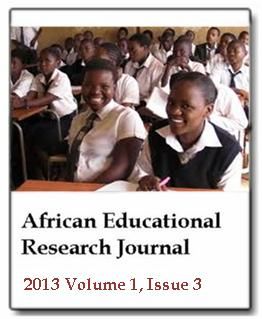An evaluation of secondary school principals’ perception of learning resources in free secondary education era in Kenya
Andrew Makori and Henry OnderiAfrican Educational Research Journal
Published: October 28 2013
Volume 1, Issue 3
Pages 171-182
Abstract
This article reports on the findings from a quantitative research study on learning resources in Kenya’s secondary schools. The purpose of this study is to investigate the secondary school principals’ perception on the learning resources. The study adopted a quantitative survey design involving 81 secondary principals, selected purposively. Data was collected using a questionnaire (open and closed-ended, rating scale items). Data was analysed using Statistical Package for Social Sciences (SPSS) resulting in descriptive data. From the study, it was found that some schools do not have laboratories, libraries and workshops. Some of the resources were charged unfavourably by the principals therefore raising concerns regarding their quality in the teaching learning process. In terms of their contributions to the teaching and learning process, textbooks and classrooms were charged higher while furniture was charged lowest. The rest of the resources fall in between. As sources of funding, Secondary Free Education (FSE) and Parent Teacher Association (PTA) were considered favourably than Constituency Development Fund (CDF) and Local Authority Transfer funds (LATF). However, FSE was found to be inadequate and unreliable. In conclusion, the implications of the principals’ perception on the quality of the teaching and learning resources are that their morale and job satisfaction may be negatively affected thus indirectly affecting the quality of teaching and learning. Poor quality of resources would directly affect the teaching and learning process. In either case, students’ attainment may be affected negatively.
Keywords: Secondary schools, principals, learning resources, academic achievement, Kenya, Nyamira County.
Full Text PDF
